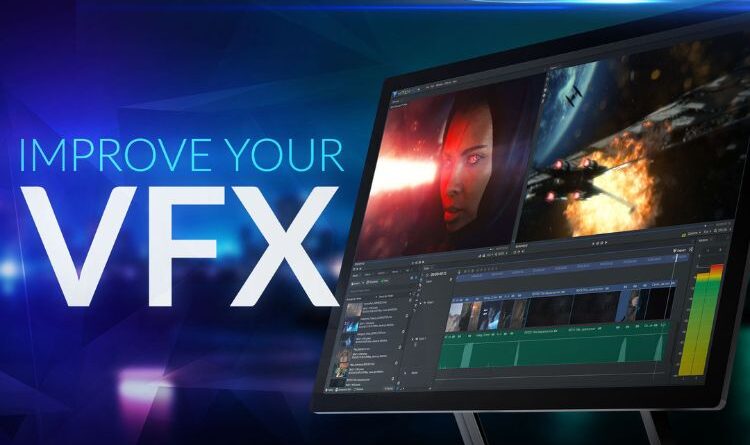Visual Effects (VFX) Market Share, Size, Forecast (2024-2032)
The global visual effects (VFX) market size was approximately USD 35.59 billion in 2023. The market is estimated to grow at a CAGR of 12.9% during 2024-2032 to reach a value of USD 106.04 billion by 2032. This exponential growth highlights the critical role VFX plays in modern media and entertainment. From enhancing the visual appeal of blockbuster movies to creating immersive gaming experiences, VFX technology is revolutionizing content across multiple platforms.
Market Segmentation
By Component
Software VFX software forms the backbone of the industry, enabling artists to create stunning visuals. Major software includes Adobe After Effects, Autodesk Maya, and Houdini. These tools offer a range of features, from 3D modeling and animation to compositing and motion graphics, facilitating the creation of complex visual effects.
Hardware The importance of robust hardware cannot be overstated in the VFX industry. High-performance graphics cards, powerful CPUs, and extensive storage solutions are crucial for rendering and processing VFX. Key hardware components include NVIDIA’s GeForce RTX series, AMD’s Radeon Pro series, and Intel’s high-end processors.
Services VFX services encompass a wide array of offerings, from pre-visualization and on-set supervision to post-production and final compositing. These services ensure the seamless integration of VFX into live-action footage, enhancing the overall visual storytelling.
By Production Method
Modelling Modelling is the process of creating three-dimensional representations of objects or characters. It is a foundational aspect of VFX, used extensively in movies, games, and virtual simulations. Techniques such as sculpting, texturing, and rigging are employed to create realistic models.
Matte Painting Matte painting involves creating realistic background environments that are either physically impossible or impractical to film. This technique has been a staple in the VFX industry, contributing to iconic movie scenes and fantastical landscapes.
Others Other production methods in VFX include rotoscoping, motion capture, and particle effects. These techniques are continually evolving, driven by advancements in technology and creative innovation.
By Application
Movies The film industry is the largest consumer of VFX, using it to create visually stunning scenes that captivate audiences. Movies like “Avatar,” “Avengers: Endgame,” and “Inception” are prime examples of how VFX can elevate cinematic experiences.
Television Television shows are increasingly adopting VFX to enhance storytelling. Series like “Game of Thrones,” “Stranger Things,” and “The Mandalorian” have set new standards for visual effects on the small screen.
Gaming VFX is integral to the gaming industry, providing immersive and interactive experiences. Games like “The Witcher 3,” “Cyberpunk 2077,” and “Call of Duty” showcase the cutting-edge VFX used to create realistic environments and dynamic gameplay.
Advertisements In advertising, VFX is used to create engaging and memorable commercials. Brands leverage VFX to produce visually appealing ads that stand out in a crowded market, such as the iconic Old Spice commercials.
Others Beyond traditional media, VFX is making its way into various sectors like virtual reality (VR), augmented reality (AR), and live events. These applications demonstrate the versatility and growing demand for VFX.
Regional Analysis
North America North America is a leading market for VFX, driven by the presence of major studios and technological advancements. The region’s market is characterized by high investment in R&D and the adoption of innovative VFX techniques.
Europe Europe has a strong VFX industry, with countries like the UK, Germany, and France being key players. The region benefits from a skilled workforce and a thriving film industry.
Asia Pacific The Asia Pacific region is experiencing rapid growth in the VFX market, fueled by the booming entertainment industry in countries like China, India, and South Korea. The region is also a hub for outsourcing VFX work due to its cost advantages.
Latin America Latin America is an emerging market for VFX, with growing investments in local film and television production. Countries like Brazil and Mexico are at the forefront of this growth.
Middle East and Africa The Middle East and Africa are gradually adopting VFX, driven by increasing investments in the entertainment sector and technological infrastructure.
Market Dynamics
Drivers The primary drivers of the VFX market include technological advancements, the growing demand for high-quality content, and the increasing use of VFX in various applications. Innovations in AI, machine learning, and real-time rendering are transforming the industry.
Restraints Challenges faced by the VFX industry include high production costs, the need for skilled professionals, and the complexity of VFX workflows. These factors can hinder market growth, especially for smaller studios.
Opportunities Emerging opportunities in the VFX market include the expansion of VR and AR applications, the increasing use of VFX in live events, and the potential for cloud-based VFX services. These trends are expected to drive future growth.
Competitive Landscape
The VFX market is highly competitive, with major players like Industrial Light & Magic, Weta Digital, and Framestore leading the industry. These companies continually innovate to maintain their market positions. Strategic initiatives such as mergers and acquisitions, partnerships, and technological investments are common.
Key Trends and Developments in the Market
Technological advancements in AI and machine learning are revolutionizing VFX, enabling faster and more efficient production processes. The increasing use of VFX in new applications, such as VR and AR, is also shaping the future of the industry. Collaborative efforts between studios and tech companies are driving innovation and expanding the capabilities of VFX.
Market Forecast (2024-2032)
The VFX market is projected to grow significantly, driven by advancements in technology and the increasing demand for high-quality visual content. Key factors influencing future growth include the adoption of new VFX techniques, the expansion of VFX applications, and the rising investments in the entertainment industry.
Read More Our Other Reports:
Saudi Arabia Electric Motors and Transformers Maintenance Market
Toilet Soap Market
United Kingdom B2B Mayonnaise Market
North America Direct Selling Market
Tribulus Terrestris Extract Market












Leave a Reply